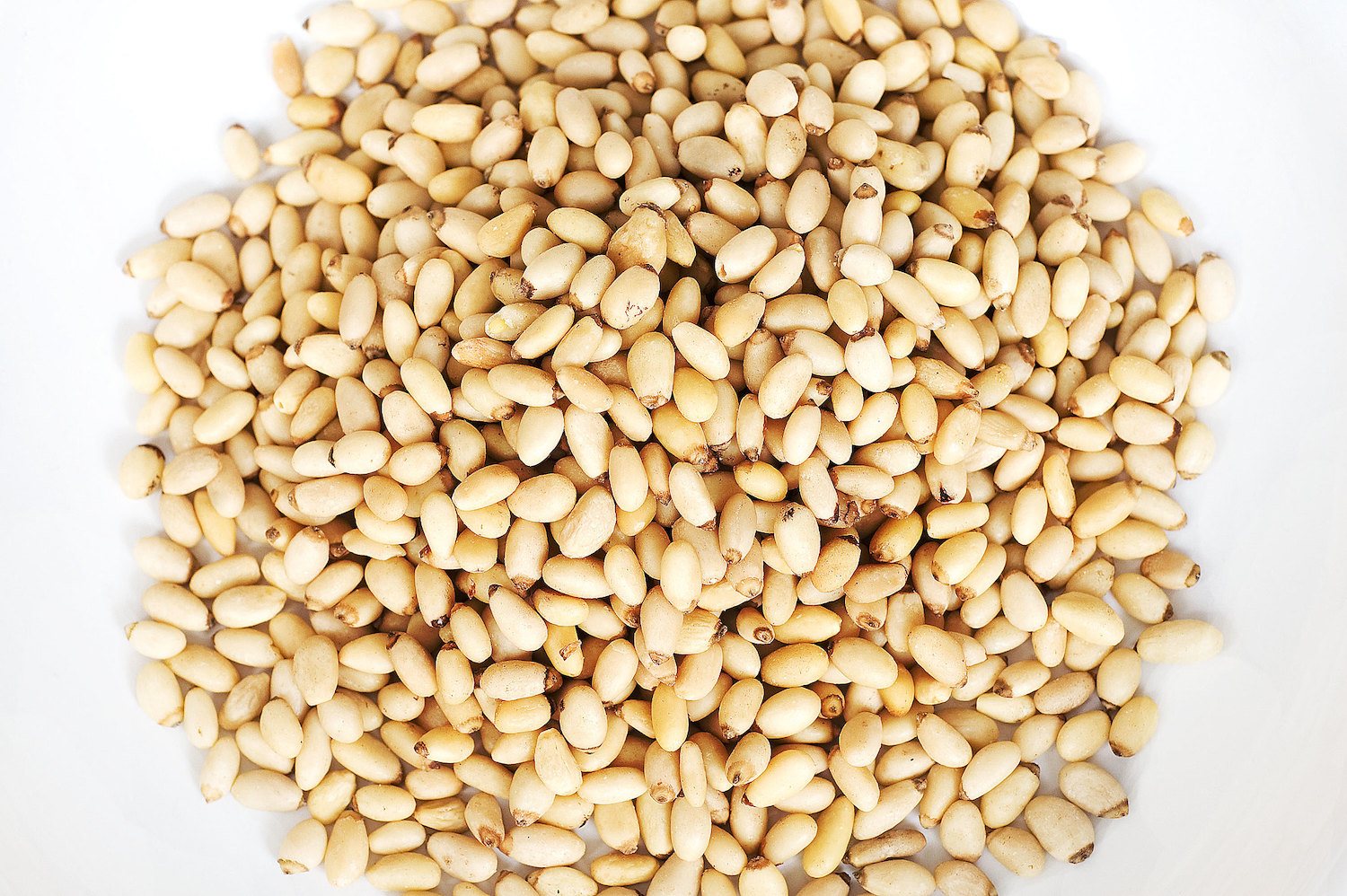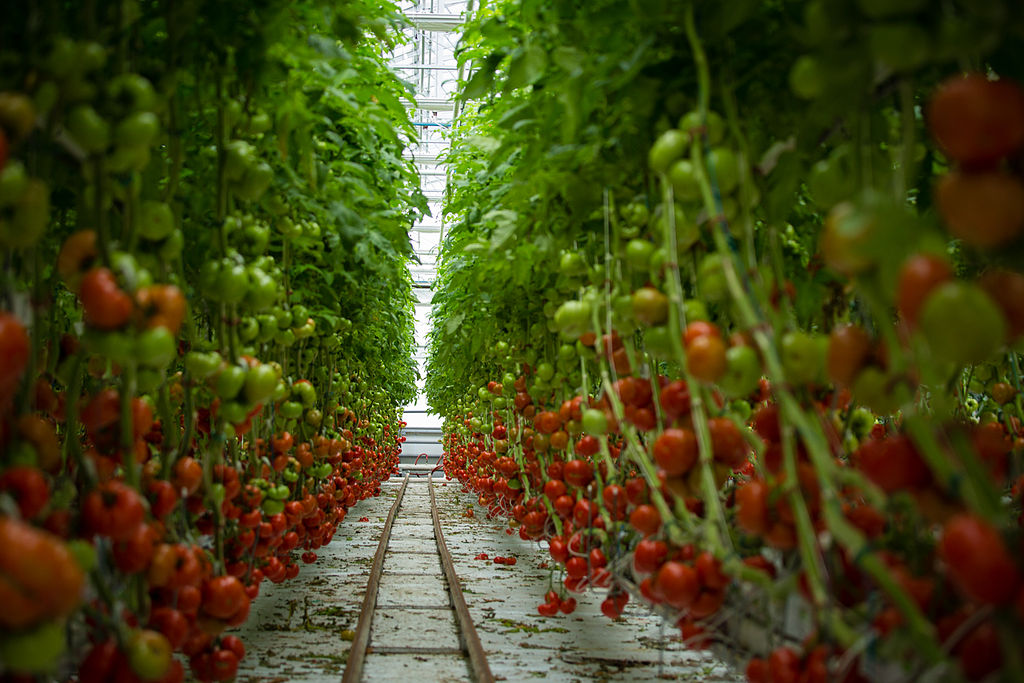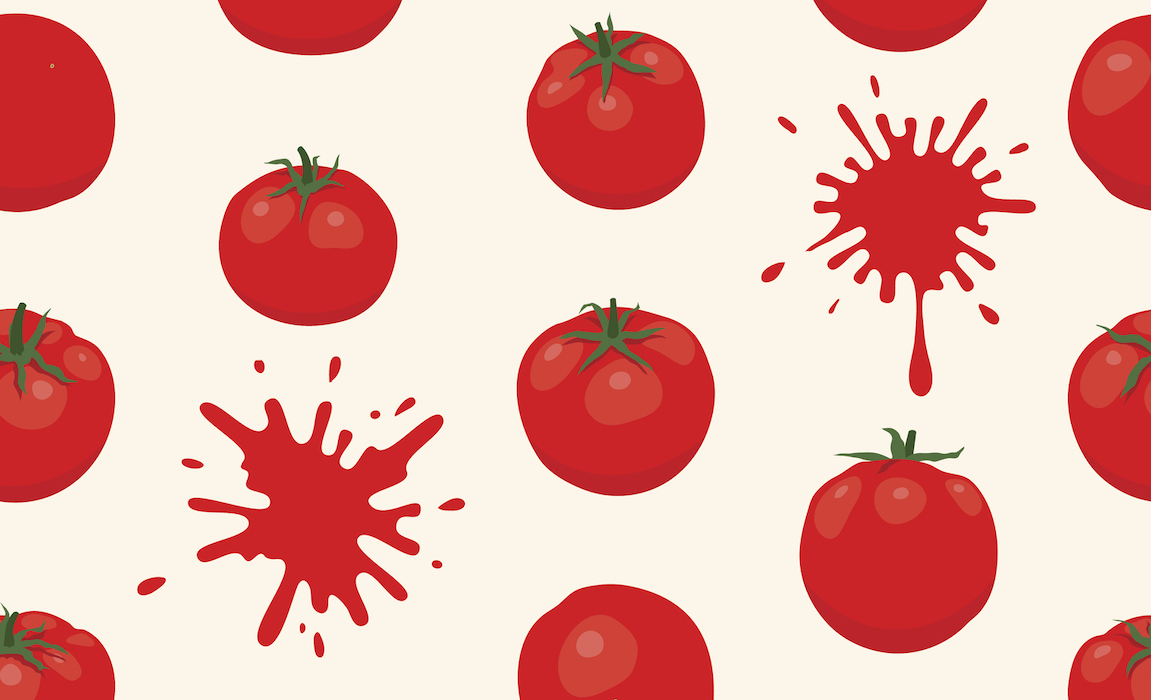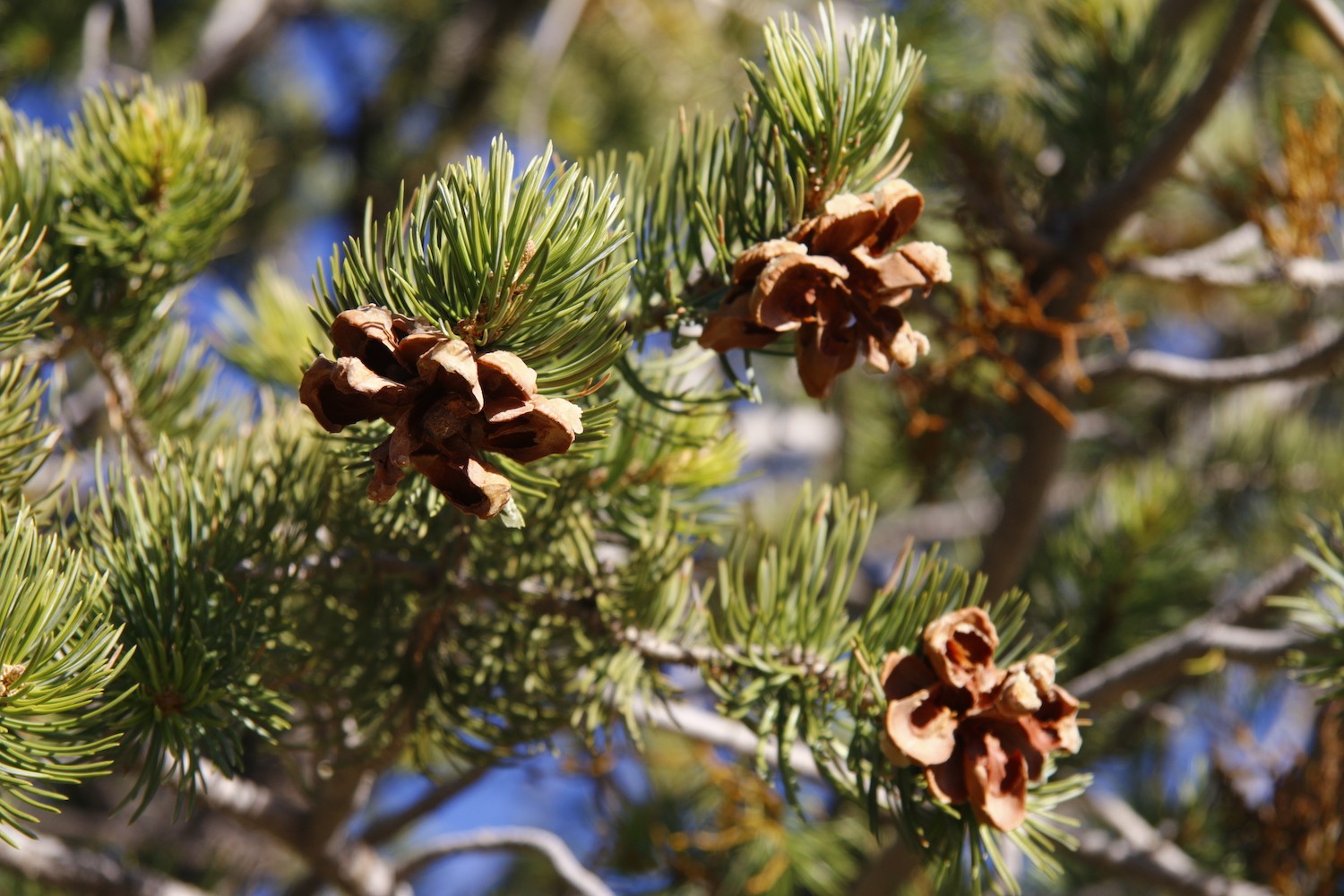
Gloria Dickie
A seasonal staple of Southwestern cuisine, piñons are both cultural tradition and economic lifeline. Thanks to climate change, they face an uncertain future.
Every few years, long after heavy summer rains have swept through the woodlands of the American Southwest, Elizabeth Sanchez books a flight home to her native New Mexico for the fall harvest of piñon—the tiny nut of the Pinus edulis tree. “My parents will call me in July or August, just as the pods emerge, and tell me if the crop looks good that year,” she said.
Sanchez, 28, lives in California now, but grew up in Taos, a high-desert town notable for its adobe architecture tucked between the Sangre de Cristo Mountains and the Rio Grande. Her family arrived here some 400 years ago with the Spanish conquistadors in feverish pursuit of the Seven Golden Cities, mythic settlements rumored to exist there. Though such riches proved elusive, settlers did discover a landscape filled with unique plants and animals they’d never seen before. To survive the dry, cold winters, the Spanish learned from the Pueblos, and the animals, to gather the plentiful fatty pine nuts and crack the shells with their teeth, like sunflower seeds. The practice ultimately endured, passed down from generation to generation.
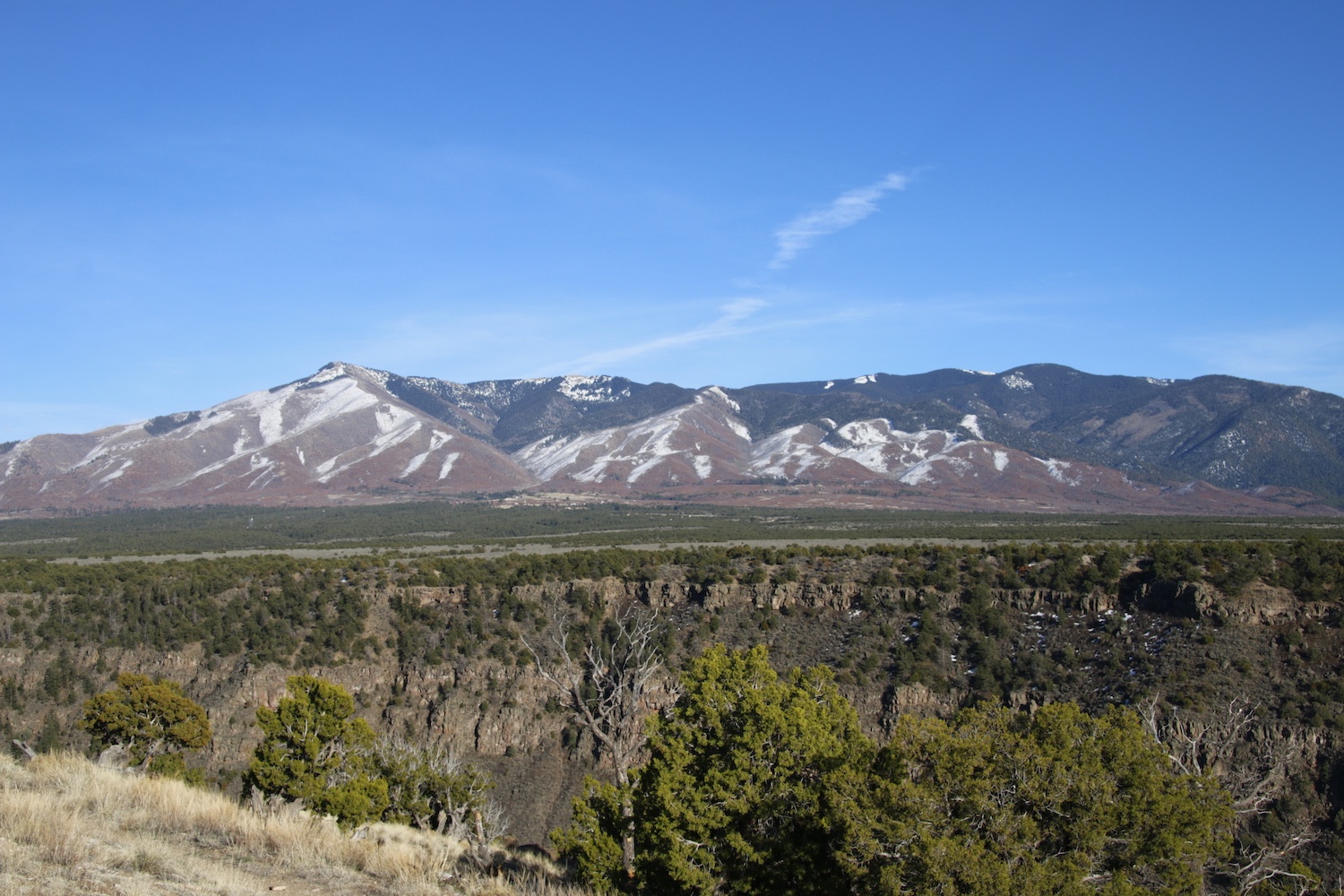
The pinon-juniper woodlands of Rio Grande del Norte National Monument in northern New Mexico
Gloria Dickie
As a child, Sanchez would pile into the car with her family, heading out to Carson National Forest to pick piñon for the coming winter. In September and October, it was common to see dozens of vehicles parked on the road near healthy piñon groves. Though some people arrived with bed sheets in tow, spreading out the thin fabric below the trees and shaking the pines vigorously until the nuts rained down, Sanchez’s family did things in the way of their ancestors; they crawled on their hands and knees, scrubbing the forest floor for the bronzed piñon. “It’s tedious—it takes almost an hour to get one pound, and you need to leave some for the animals,” she said, in reference to the local practice of leaving seeds behind for wildlife so that they’re able to be hunted.
In the wake of such scarcity and rising prices, more customers are turning to imported pine nuts
There were no cell phones. No distractions. “We told stories and picked for hours. My favorite was to pick the piñon that was sitting in the sun because it was already roasted.” Her grandmother was the fastest, finding a spot and sweeping away the sharp needles so she could sit and pick every last nut. Later, she’d add them to empanaditas with sweet pork and raisins. For Sanchez, piñon was a source of cultural pride. When a boy tried to insult her by calling her and her sister “piñon pickers,” she was flattered, not hurt.
But by the time Sanchez was a teenager, the piñon was disappearing. “In Taos, we had a seven-year drought. We didn’t get any piñon,” she said. Though the Pinus edulis normally masts—the event wherein a tree produces a huge amount of seeds—every three to five years, between 2009 and 2016 hardly any piñon was to be found in north-central New Mexico. In the early 2000s between 40 and 80 percent of pinus edulis trees died due to ongoing drought and bark beetle infestations in sites across Arizona, Colorado, Utah and New Mexico. “It’s a concern because it’s the type of thing we can expect more of with global warming,” said David Breshears, a researcher at the University of Arizona.
“Nothing tastes like these native piñon. They are out of this world.”
Though piñon made a small comeback in the latter half of the 2010s, the cones are emptier than they used to be, Sanchez said. Indeed, scientists have found that seed cone production in stands across New Mexico has fallen by 40 percent due to climate change.
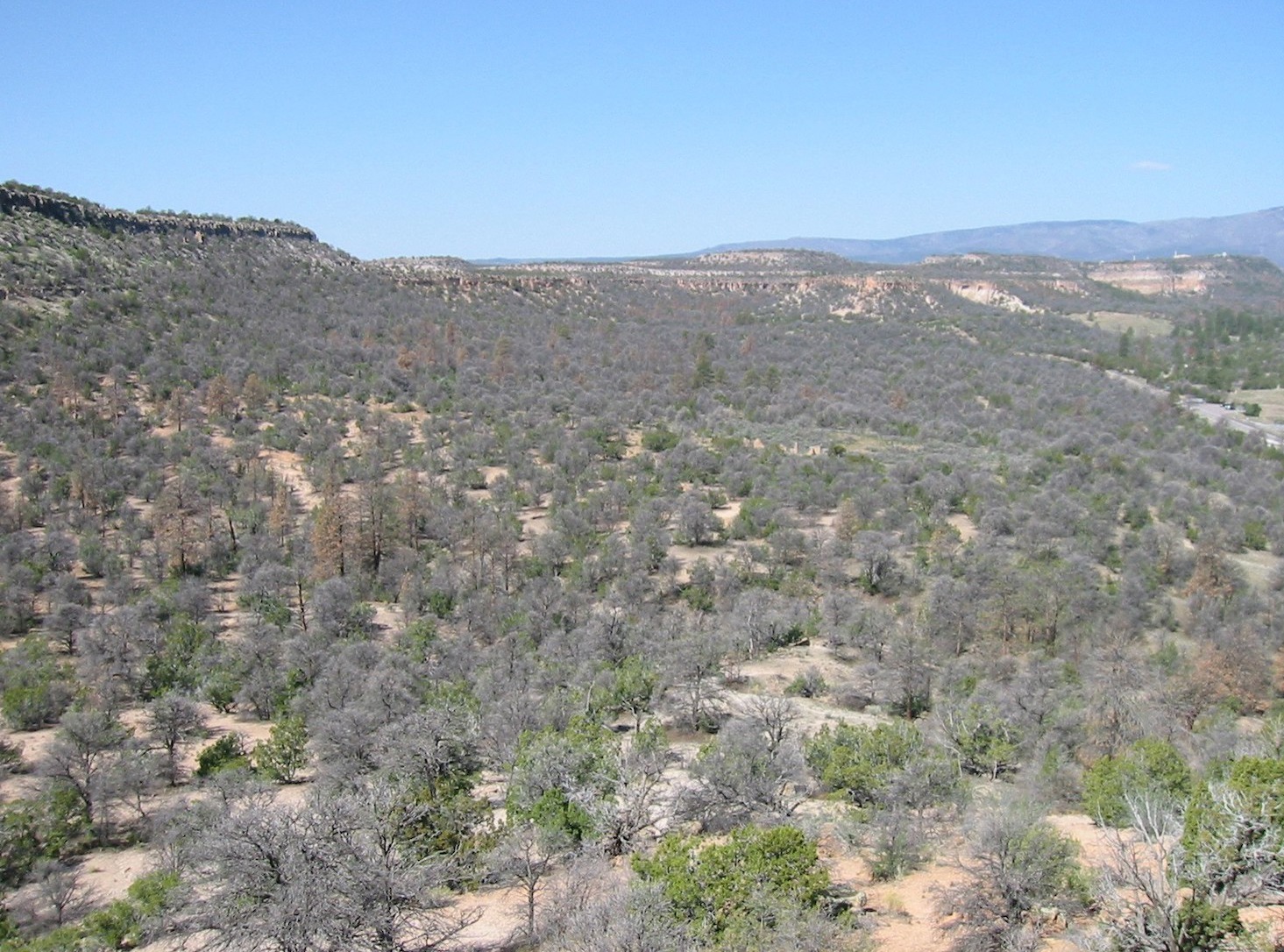
A display of the piñon pine die-off in New Mexico
Craig Allen, USGS. Public domain
Exacerbating the disappearance of native piñon is the rise of cheap, foreign imports; China exported over 16,000 metric tons of pine nuts in 2017, with much of that destined for the United States.
Sanchez worries this part of her cultural heritage could soon disappear; piñon and chile are some of the only things she has left. “It’s sad. Over the last 20 years, a lot of our culture and traditions have dwindled. We’ve become a lot more Americanized,” she said.
“It would be devastating if we lost piñon.”
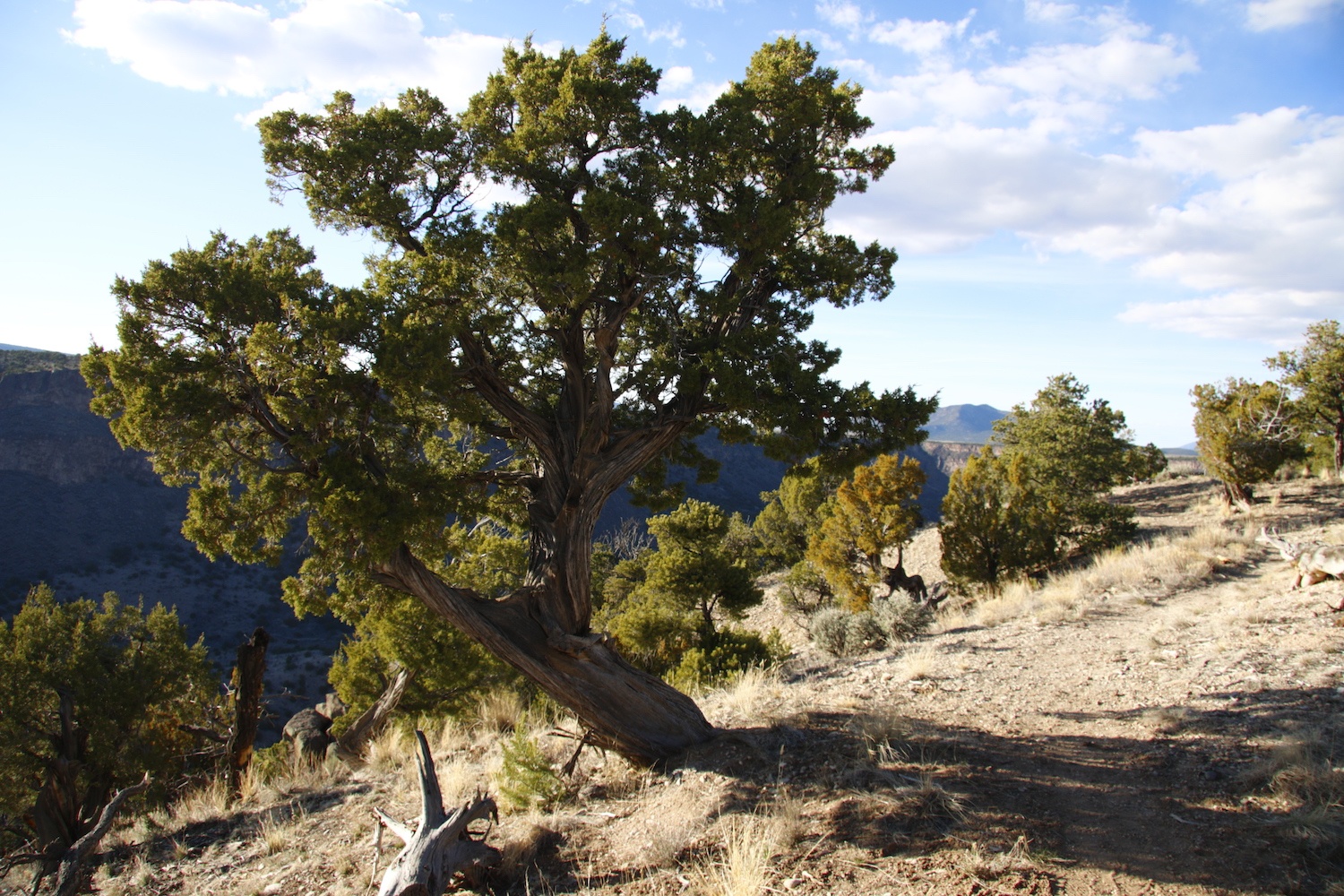
Annual average temperatures in piñon-juniper woodlands fall between 40 and 61 degrees Fahrenheit, while precipitation brings between seven and 25 inches annually
Gloria Dickie
Piñon-juniper woodlands cover millions of acres across the American Southwest, fringed by scrublands at lower elevations and melded into ponderosa pine forests above 7,500 feet. Named for the presence of the two unique trees, these woodlands have evolved to live at extremes. Annual average temperatures in piñon-juniper woodlands fall between 40 and 61 degrees Fahrenheit, while precipitation brings between seven and 25 inches annually, with much of that delivered in the summer monsoon. However, these unique woodlands are one of the least studied forest types in America. What scientists do know is that roughly 13,000 years ago, warming temperatures and decreasing rainfall in the Southwest pushed piñon-juniper woodlands farther north, and relegated them to areas of high elevation.
“Piñon grows best during cool, wet years,” explained Miranda Redmond, a researcher in the Forest Ecology Lab at Colorado State University who studies piñon pines. The initiation of seed cone production begins roughly two years before an actual masting event, and big seed years are much more likely to occur in cooler microclimates, where gnarled canopies provide shade for establishing seedlings. If the trees don’t receive much rain, or if the summer is too hot, piñon trees won’t produce.
In New Mexico, annual average temperatures have increased by two degrees Fahrenheit over the past 40 years. Things are projected to get worse.
Though lags between big seed years are natural in piñon pines—they can be as long as five years under normal conditions—“climate change can make the gap longer,” Redmond said. “That’s what we think may occur in the future because the hot, dry sites are producing cones much more infrequently.”
In a 2012 study, Redmond and colleagues found that at sites in New Mexico and northwestern Oklahoma, seed cone production declined by 40 percent between the substantially cooler 1970s and the hotter 2000s. Sites that experienced the greatest warming showed the largest decline in seed cone production.
Hotter temperatures don’t just hurt the establishment of new trees—they can also kill the old ones. Between 2002 and 2003, Breshears and researchers from the University of Arizona found that 40 to 80 percent of piñon pines had died across much of the Southwest. The die-off spanned more than 4,600 square miles and was so large it could be seen in satellite images. When they examined the cause of the die-off, the researchers found high heat—hotter than historic droughts—combined with extreme aridity placed the trees under so much stress that invasive bark beetles were able to finish them off; the trees couldn’t produce enough sticky sap to defend themselves against an insect invasion.

Deep into drought, a home near Questa, NM features a sign from the New Mexico Acequia Association whose mission is to protect water, honor cultural heritage and grow healthy food for families and communities
Gloria Dickie
Despite this, some see the die-off as more of a die-back. James Youtz is a silviculturist with the U.S. Forest Service in the Southwest Region. He says he doesn’t consider piñon to be in decline. “I don’t see any sort of a reduction in piñon as to how it should be across the Southwest.” Rather, he attributes the mortality event in the 2000s to poor soil quality—those that died were growing in coarse-textured soils. In his view, piñon-juniper woodlands had already expanded beyond their natural range into grasslands. “The drought then moved them back toward their more historic ranges. Much of our piñon and juniper is too dense compared to historic conditions due to a lack of fire.”
But Redmond counters that though increases in piñon and juniper density and expansion were documented in some areas during the 1900s, this was due to a suite of factors, not just fire exclusion. While cool and wet conditions in the early part of the century promoted pinon growth, it’s also likely that forests were recovering from past woodcutting by European settlers. In Redmond’s view, the growth of piñon seen in the early 20th century was a return to a kind of baseline—though that brief period of equilibrium has, more recently, fallen back into disorder. “Given recent and projected tree mortality, we need to manage for tree resilience to drought in these ecosystems, as right now efforts have been focused on removing these trees for other management goals,” he said.
Annual average temperatures have increased by two degrees Fahrenheit over the past 40 years in New Mexico. The last decade was the warmest on record for the state, with a growing number of extremely hot days and warm nights. And things are predicted to get worse.
“Piñon is really water limited. All of its key demographic properties are affected by aridity which is projected to increase under climate change.”
Federal scientists say that spring precipitation will decrease across most of the New Mexico. Droughts are projected to become more intense, increasing the frequency and severity of wildfires and dust storms.
“I’m not a pessimist. I want to think the trees are going to be fine,” said Redmond. “But at the same time, piñon is really water limited. All of its key demographic properties—seed cone production, establishment, and growth—are affected by aridity which is projected to increase under climate change.”

Typically piñon is sold up through a supply chain, when it’s not sold at roadside stands
Flickr/Samat K. JainCome fall, U.S. 285 is transformed by vendors with large hand-painted signs advertising their wild-foraged fare to passing motorists. One pound of piñon typically sells for between $15 and $20 per pound, making the nut not just one of cultural importance, but one of economic importance, too.
Much of New Mexico’s commercially harvested piñon is collected by new immigrants to the state. “When there’s piñon, people at all levels of business make money,” said Luis Torres, 79, who lives near Española. “The guy that makes the least is the guy that picks it. That’s the way the world works, but it is a source of income for people.”
Typically piñon is sold up through a supply chain, when it’s not sold at roadside stands. A middle-man will buy from the local piñon pickers and sell to a bigger fish—often someone who drives down from Pueblo or Denver seeking hundreds of pounds from local communities. Many of the pickers are undocumented, and hesitant to talk, according to Torres, who considers himself an ally to new immigrants. “The whole thing is a cash economy; it’s not regulated. Nobody pays taxes.” Though the Bureau of Land Management and U.S. Forest Service require a permit for any harvest over 25 pounds on public lands, it’s hard to keep tabs. And a lot of piñon is gathered on private lands anyway.
Piñon’s well-timed seasonality makes it a critical holdover for seasonal workers.
Torres serves as a community organizer for local environmental groups. He grew up on a subsistence ranch in northern New Mexico, and has witnessed the many changes in the region, socially and environmentally. He says many of the newly arrived Mexicanos will work gardening jobs through the summer, then transition to foraging. “Just about the time the landscaping season is slowing down, that’s about the time the piñon is ready.”
That well-timed seasonality means piñon can be a critical holdover for seasonal workers. In Taos, Elizabeth Sanchez recalls the struggling locals who needed the supplemental income to make it through the year. “They relied on selling firewood, jerky, and piñon. If you lost that revenue, it might be $15 to $20 per pound during the harvest, but once everyone starts running out it can go up to $35.”
Last June, Andy Pasqual launched his food business, Nashoba Provisions, in Casa Grande, Arizona. Part of the Tohono O’odham Nation, he had hoped to sell the staple foods of Indian Country to a larger market—Native American casinos, hotels, and art galleries. Naturally, piñon was on his radar.
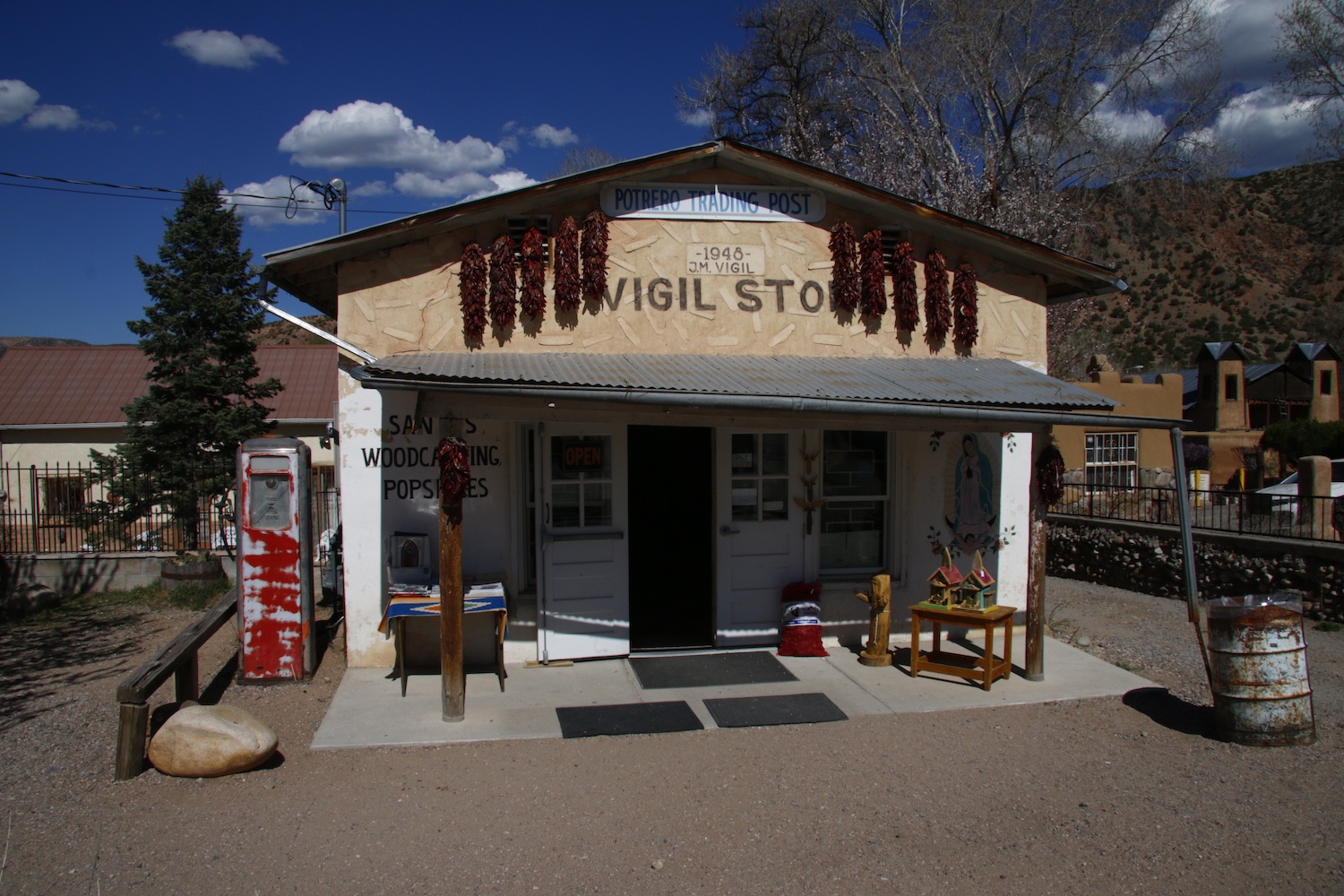
A store near El Santuario de Chimayo, NM sells pinon nuts, chile, and holy items to passing pilgrims
Gloria Dickie
Pasqual sources the raw product from Navajo vendors who travel to his reservation in southern Arizona, then he roasts, salts, and packages the nuts. “To get a good shipment together, we have to buy about 30 to 40 pounds.” Pasqual says he thought it would be easy to buy piñon, but once he began it was difficult to find the suppliers selling bulk. “It was because there has been a decline in nut production. Prices are going up.” As a child on the reservation, he said, “one or two vendors a month would come down, but now you’re lucky if you see one vendor within a four- to five-month period.”
In the wake of such scarcity and rising prices, more and more customers are turning to imported pine nuts. For the many Southwesterners outside of Native and Hispanic communities who like to use piñon both as a snack, and in cooking, an obvious alternative source exists: store-bought nuts from China. In 2017, China exported nearly 70 percent of the world’s pine nuts, a fifth of which made its way to the United States. China itself produces the most, but it often imports pines nuts from Afghanistan, Pakistan, and Russia, shelling and processing the nuts in country before shipping them around the globe. Due to lower labor and processing costs in China, imported pine nuts cost roughly 30 percent less per pound than domestic piñon in the Southwest.
“There’s this perception that they’re famine foods. That’s not really correct.”
Giulia Muir specializes in non-wood forest products at the Food and Agriculture Organization of the United Nations. She says it’s loosely estimated that the pine nut industry supports about 500,000 people in China, and 200,000 between Afghanistan and Pakistan. But a lot of these industries lack good statistics. “We know that [pine nuts] have a certain value in the hundreds of millions if you look at global figures,” she said, but adds it’s important to recognize the nutritional and subsistence importance, too. As an informal industry, the Southwestern piñon trade may not be reflected accurately in worldwide market data, and may be difficult to quantify—but that doesn’t mean it’s not a food with critical economic and cultural importance.
“There’s this perception that they’re famine foods. That’s not really correct,” Muir said. “A large majority will say, ‘This is our food. This is what we eat.’”
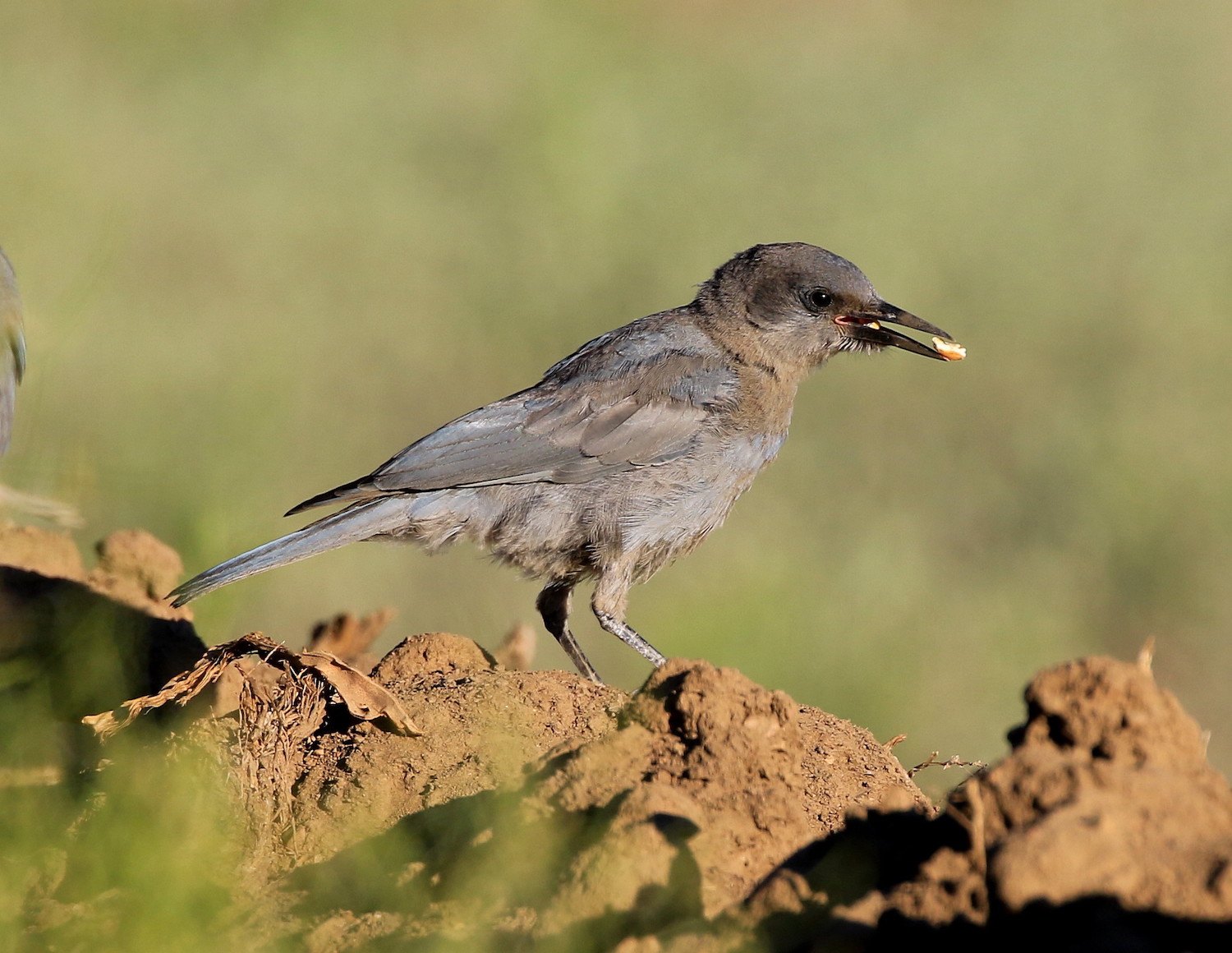
Only wildlife like the piñon jays, elk, and black bears can pass through the forest
Forty miles north of Taos, near the Colorado border, lies one of the last old-growth piñon forests in the American Southwest. More than 120 acres of brushy, twisted piñon pines lie within a private inholding of the Rio Grande del Norte National Monument. At 500 years old, many predate the arrival of the Spanish conquistadors. This is the only USDA certified wild organic crop of piñon in New Mexico.
Thirteen years ago, Penelope Gregory bought the ranch. She’s kept the piñon pine plot fenced off from livestock in hopes of protecting the trees. Only wildlife—the piñon jays, elk, and black bears—can pass through the forest.
At over 8,000 feet of elevation, Gregory’s trees enjoy a moist, cool microclimate that she hopes will spare them from the ravages of climate change. San Antonio Mountain, the highest volcanic peak in the Taos Plateau, lies just west of the forest, catching clouds while strong winds move rain and snow over the ancient piñons.
“It would be devastating if we lost piñon.”
Shortly after she purchased the land, Gregory started to receive public inquiries about her piñons. “Mostly Native American and Hispanic people call me and say, ‘My grandma used to go out and pick and I want to teach my kids.’” In 2014 she applied for certification to begin allowing U-PICK piñon, charging $50 a day for access and all-you-can-gather nuts. Eventually Gregory hopes to hire a broker who can bring in a harvest crew that takes the whole crop, charging by weight.
“I wanted to try to get the word out about [our] own American native nuts,” she said. “I had watched the Chinese take over the pine nut market. I don’t care where you go these days, you walk into a grocery store and you pick up a bag of pine nuts and they’re going to be from China. That doesn’t seem right.”
Plus, she says, the flavor isn’t easily imitated by the cheap Chinese product. “Nothing tastes like these native piñon. They are out of this world.”
Throughout 2019, Gregory kept a close eye on her piñon. By fall, the younger trees had started dropping nuts, though it wasn’t a huge masting. But she’s optimistic for this year. “I’ll probably have a massive crop,” she said. “It looks like the trees are really going to produce.”
